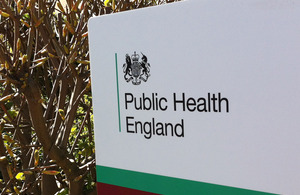Better Bones Osteoporosis Service from Kingston Public Health
A preventative service encouraging people at risk of osteoporotic fractures to remain physically active and learn to self-manage their condition.

Summary
Kingston Public Health delivered the Better Bones Osteoporosis Service to people aged over 50 who live or work in Kingston or are registered with a Kingston GP, and are at risk of or have already been diagnosed with osteoporosis or osteopenia.
Background
As people age, there is a common decline in physical activity, putting them at increased risk of musculoskeletal conditions including osteoporosis. It is estimated that 15% of people over the age of 50 years suffer from osteoporosis, and by the age of 75 it goes up to 50%.
Osteoporosis causes bones to become less dense and more fragile. Bones are at their thickest and strongest in your early adult life and their density increases until your late 20s. Bone density starts to gradually decline from around the age of 35 for everyone, but at a much faster rate than normal in some. People who develop osteoporosis face a greater risk of a fracture.
Building strong bones is crucial for preventing osteoporosis, and requires individuals at risk to remain physically active. Weight-bearing exercise and resistance exercise are particularly important for improving bone density, and preventing osteoporosis and fractures.
What was involved
The Better Bones Osteoporosis Service, delivered by Kingston Public Health, is a preventative service encouraging people aged over 50 and at risk of osteoporotic fractures to remain physically active and learn to self-manage their condition.
The aims of the service are to:
- maintain or increase physical activity in people at risk of fragility fractures
- increase knowledge of bone health and lifestyle factors influencing bone health
- improve self-management for people at risk of osteoporotic fractures
- identify people at risk of fragility fractures
- prevent primary fragility fractures
The service involves bone health assessments over the phone incorporating FRAX (Fracture Risk Assessment Tool). The results are then relayed to a GP, a falls risk assessment, and PAR-Q (Physical Activity Readiness Questionnaire).
Nine 14-week exercise and education courses are provided per year, which incorporate weight bearing, strengthening and balance exercises for people with a high or medium FRAX score or a diagnosis of osteoporosis or osteopenia. Information sessions and a website on improving and maintaining bone health are also available for the general population.
Lastly, the service involves an annual reunion for people who have completed 8 or more sessions of the exercise and education courses.
The main outputs of this project from 2016 to 2017 were:
- 294 bone health assessments
- 154 Better Bones sessions provided
- 198 people attended at least 1 session
- 143 (72%) people attended at least 7 sessions
What works well
Participants were asked how many days in the past week they had carried out a total of 30 minutes or more of exercise where it was enough to raise their breathing rate. At the:
- baseline, 42% of participants were exercising 3 times a week
- 14 week point, 61% of participants were exercising 3 or more times a week
- 24 week point, 66% of participants were exercising 3 or more times a week
- 52 week point, over 60% were still exercising 3 or more times a week
Questions on balance, getting up off the floor, and calcium and vitamin D intake were also added to the evaluation questionnaire. It was found that at the end of the course there is an increase in confidence for getting up off the floor, and the majority of participants agree, and some strongly agree, that their balance has improved since starting the course.
Next steps
We can anecdotally report that this type of programme has the potential to continue running in the future, to provide individuals over the age of 50 and at risk of osteoporosis with the resources to remain physically active and self-manage their condition.
Further information
Contact Nimalini Ajith by email swlicb.betterbones@nhs.net or phone on 0300 123 8086.